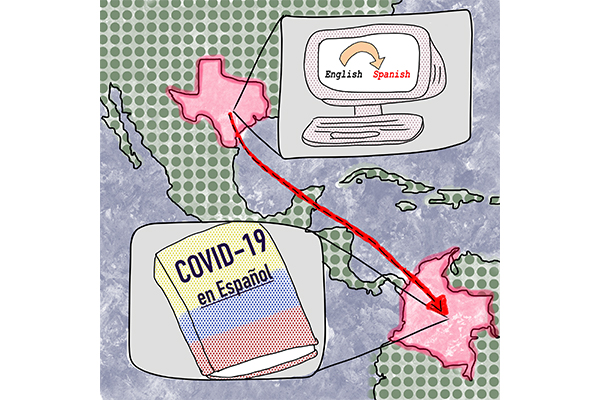Editor’s note: This story is part of The Daily Texan’s coverage of how coronavirus concerns are affecting UT-Austin. Read the rest of our coverage here.
Two bilingual Colombian UT nursing students helped translate a handbook about diagnosing and managing COVID-19 from English into Spanish to assist Spanish-speaking health care workers.
“Everything started because we noticed that there was a lack of information in our country about how to handle, treat and diagnose the characteristics of COVID-19,” graduate nursing student Daniel Suárez-Baquero said.
The “Handbook of COVID-19 Prevention and Treatment,” compiled by experts at Zhejiang University in China, was originally only available in English and Mandarin, Suárez-Baquero said.
Along with six other volunteers, Suárez-Baquero and Oscar Franco Rocha, School of Nursing research intern, were the first group to translate the handbook into Spanish, Suárez-Baquero said. The Spanish translation became available for distribution on March 23, he said. Since then, other groups have translated the handbook into German, French and Portuguese, he said.
The handbook is available through the UT School of Nursing website and has been downloaded 30 times so far, Suárez-Baquero said. It has also been electronically distributed to 119 health care workers in Colombia, he said.
As bilingual researchers, Suárez-Baquero said his group wanted to help Spanish-speaking communities in Austin. However, because they do not have nursing licenses from the state of Texas, he said they were unable to do hands-on work.
Translating the handbook was their way of bridging the information gap between English-speaking and Spanish-speaking people during the COVID-19 pandemic, Suárez-Baquero said.
“It is our task as students, as researchers, as bilingual, bicultural people,” Suárez-Baquero said. “We can use our abilities to change the world.”
Rocha said one of the challenges of translating the handbook was making it understandable across language barriers. Instead of translating the English version word for word, he said the team’s translated version of the handbook took into account the differences between languages.
“We made a very precise translation, but sometimes, that’s not helpful for people because it’s hard to understand what the author is trying to say,” Rocha said. “We tried to do an interpretation and make it easy for people to read the document and understand it.”
Martha Rodriguez-Parra, coordinator of nursing services in a Colsubsidio clinic in Colombia, said in an email translated by Suárez-Baquero that before the handbook was available, she used information from the Ministry of Health and Social Protection and the Colombian National Institute of Health that had been adapted from other countries. Due to language barriers, Rodriguez-Parra said some mistakes were made interpreting the information from the Ministry of Health.
The handbook has been useful in a clinical setting because it addresses everything from the safety of health care staff to dealing with presumptive cases of COVID-19, Rodriguez-Parra said.
“By having a unified information and a single criterion and easy access to it, it has been easier for all the staff focused on a single view … and this allows us to have a single way of health managing,” Rodriguez-Parra said.





















